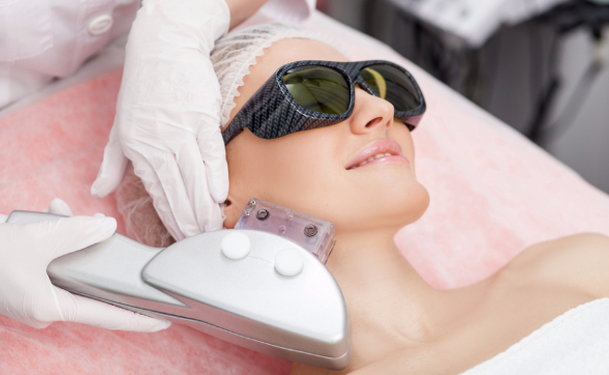As with most modern medical procedures, Blue Light Therapy has potential risks and side effects of which patients should be aware before they choose to follow through with the process. For many years, it was assumed that direct exposure to sunlight helped to diminish the effects of acne. As more and more research on Ultra Violet rays surfaced, it was discovered that exposure to the sun could, in fact, do as much damage as good in many cases. Scientists, in turn, were to isolate which parts of the light spectrum triggered the chemical reaction responsible for breaking down acne bacteria. They found that visible violet light, not UV light, was what actually killed the bacteria, and thus “Blue Light Therapy” was born.
Patients can now be treated with high-intensity, narrow-band Blue Light Therapy without risking damage due to UV exposure. The question that many patients face, however, despite this advance in modern medicine, is: “What exactly are the potential risks and side effects of Blue Light Therapy?” Since there are some mild side effects, it is recommended that patients always undergo light therapy treatment under the care and supervision of a physician rather than attempting to self-medicate.
Possible Side Effects of Blue Light Therapy
Side effects can include jitteriness, headache, nausea, skin irritation, eye irritation and poor vision. Blue Light Therapy can activate the production of reproductive hormones, such as testosterone and estradiol. Patients who have conditions which may render their eyes more vulnerable to phototoxicity, who have a tendency towards mania, who have a photosensitive skin condition, or are taking a photosensitizing medication should use extreme caution. Also, patients with porphyria should avoid all forms of light therapy. Certain drugs, such as methotrexate or chloroquine, can cause porphyria when used with light therapy.
Patients who have eye or skin conditions that are affected by bright light should also take great caution with Blue Light Therapy. Blue Light Therapy, or any light therapy, is not recommended for patients who suffer from glaucoma, cataracts, retinal detachment or retinopathy. Very infrequently, a patient will find that light therapy will make them overactive, restless and irritable, causing difficulty in sleeping. More often, patients will experience a visual glare which is caused by short wavelength blue light. To correct this effect, there are specially designed lenses which affect the intensity of the light.
Possible Risks of Undergoing Blue Light Therapy
So far, scientists have discovered the greatest risk of using Blue Light Therapy is damage to the retina. When Blue Light is absorbed by retinal tissue, it induces oxidative stress and the resulting debris accumulates in the retina over a lifetime, contributing to AMD or age-related macular degeneration. AMD eventually results in vision loss, and in extreme cases, blindness. Photoretinitis, or light-induced photochemical damage to the eye, is supposedly related to “Blue Light Hazard,” wherein it is suggested that Blue Light Therapy dramatically raises the risk of light-induced retinal damage. However, individual susceptibility is highly variable.


